Ontario is home to a diverse array of bird species, many of which can be found in a range of colors.
One of the most striking and visually appealing of these is the yellow bird.
In this article, we will explore 15 different types of yellow birds that can be found in Ontario.
From the brightly colored American Goldfinch to the more subtle tones of the Yellow Warbler, we will take a closer look at the unique characteristics and habits of each of these beautiful birds.
Whether you are an avid bird watcher or simply enjoy admiring the beauty of nature, this article is sure to provide you with some fascinating insights into the world of yellow birds in Ontario.
| Image | Name |
|---|---|
 | Wilson's Warbler |
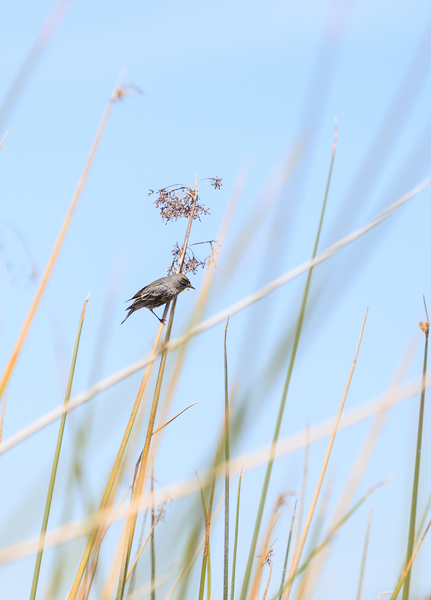 | Yellow-rumped Warbler |
 | American Goldfinch |
 | Female Scarlet Tanager |
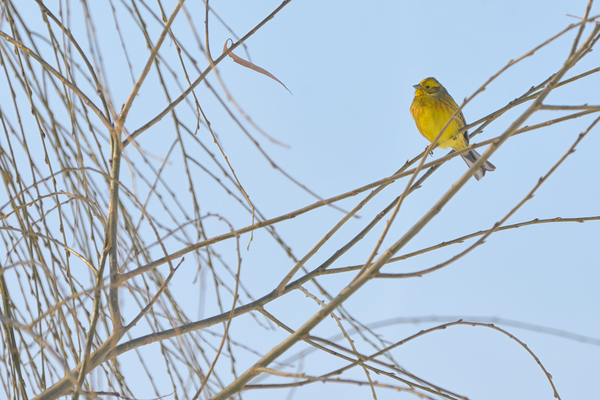 | Yellow Warbler |
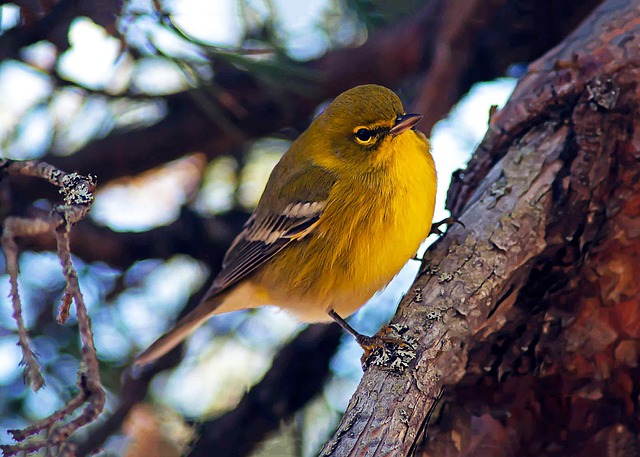 | Pine Warbler |
 | Cedar Waxwing |
 | Palm Warbler |
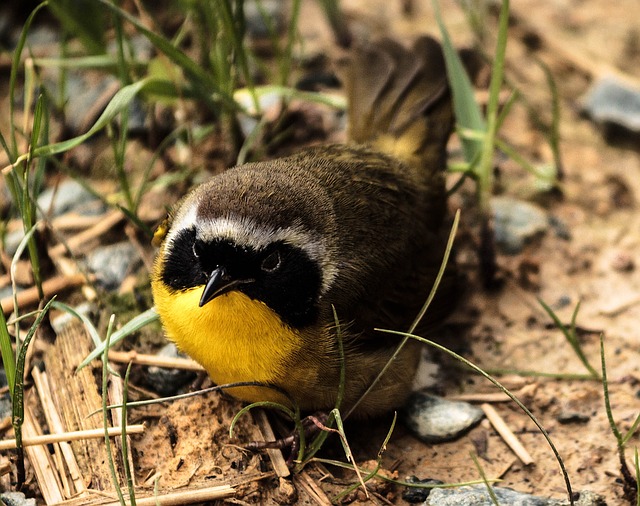 | Common Yellowthroat |
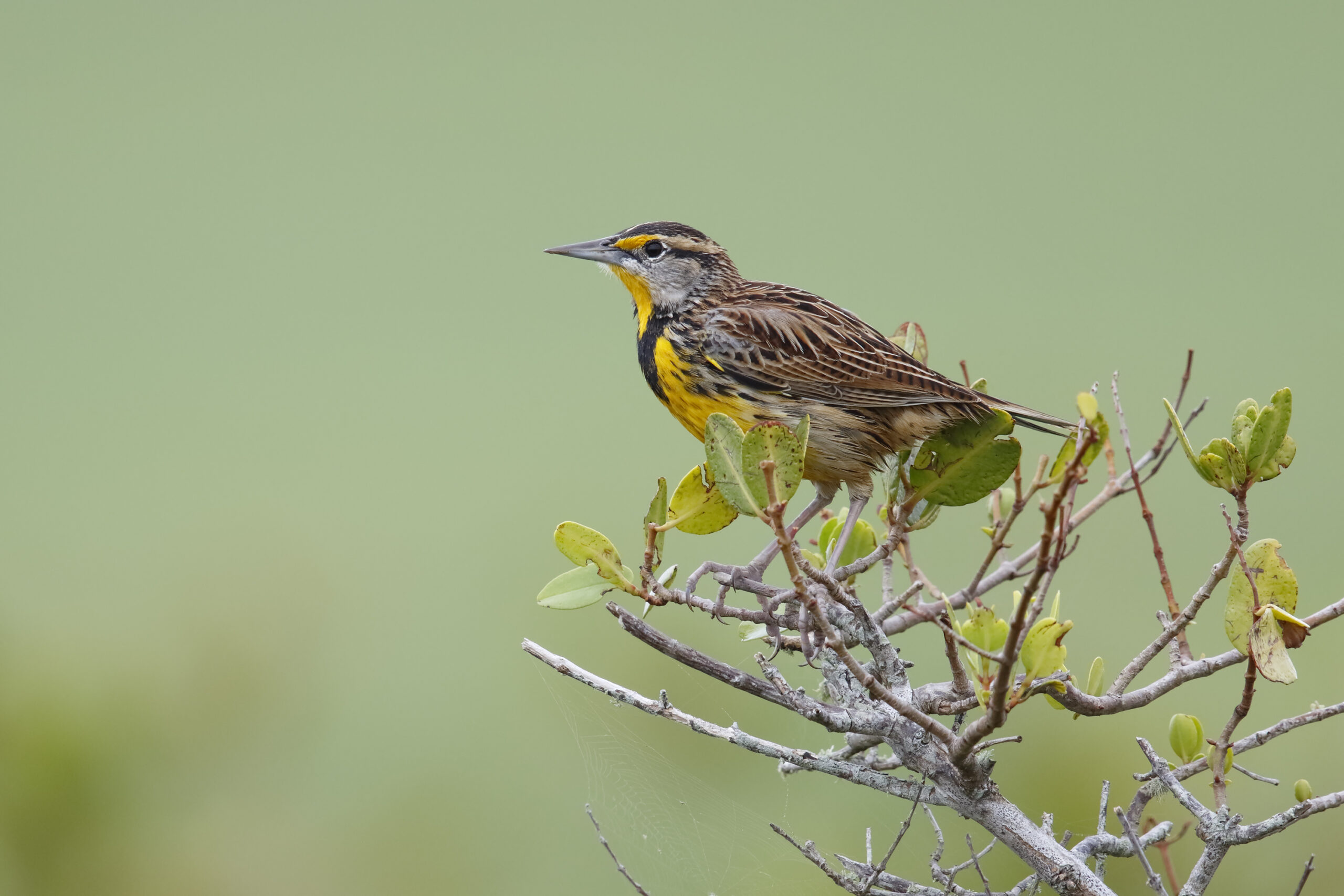 | Eastern Meadowlark |
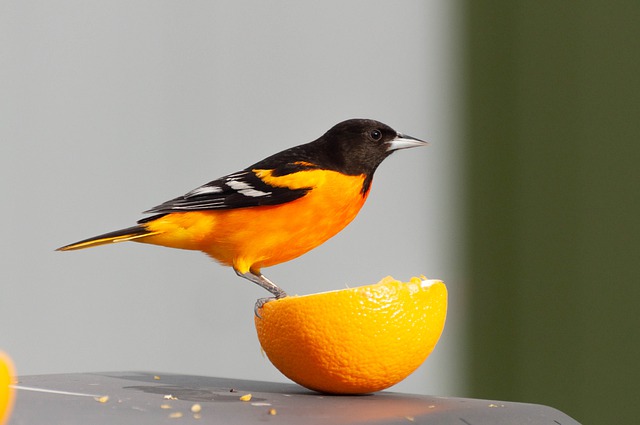 | Baltimore Oriole Female |
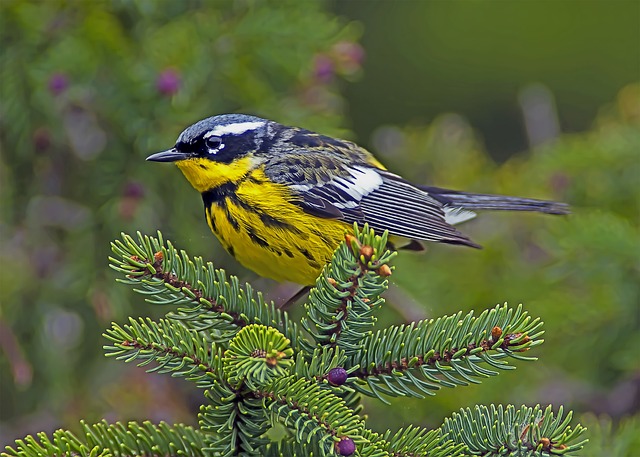 | Magnolia Warbler |
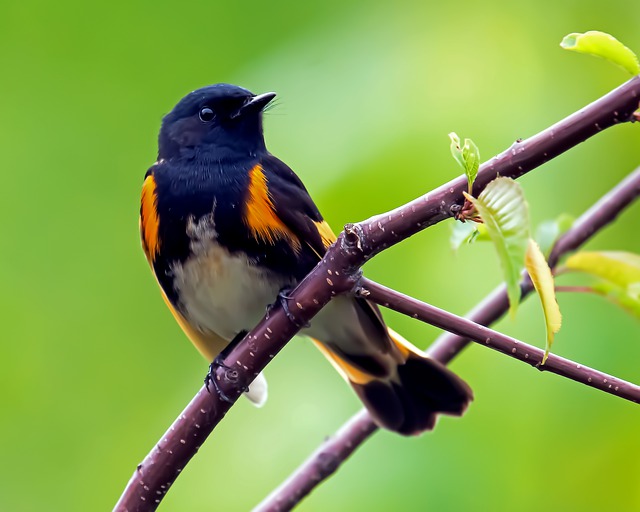 | Female American Redstart |
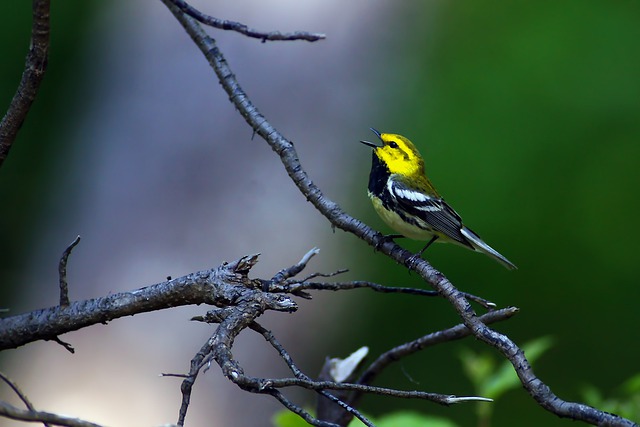 | Black-throated Green Warbler |
 | Nashville Warbler |
Types of Yellow Birds in Ontario
1. Wilson’s Warbler
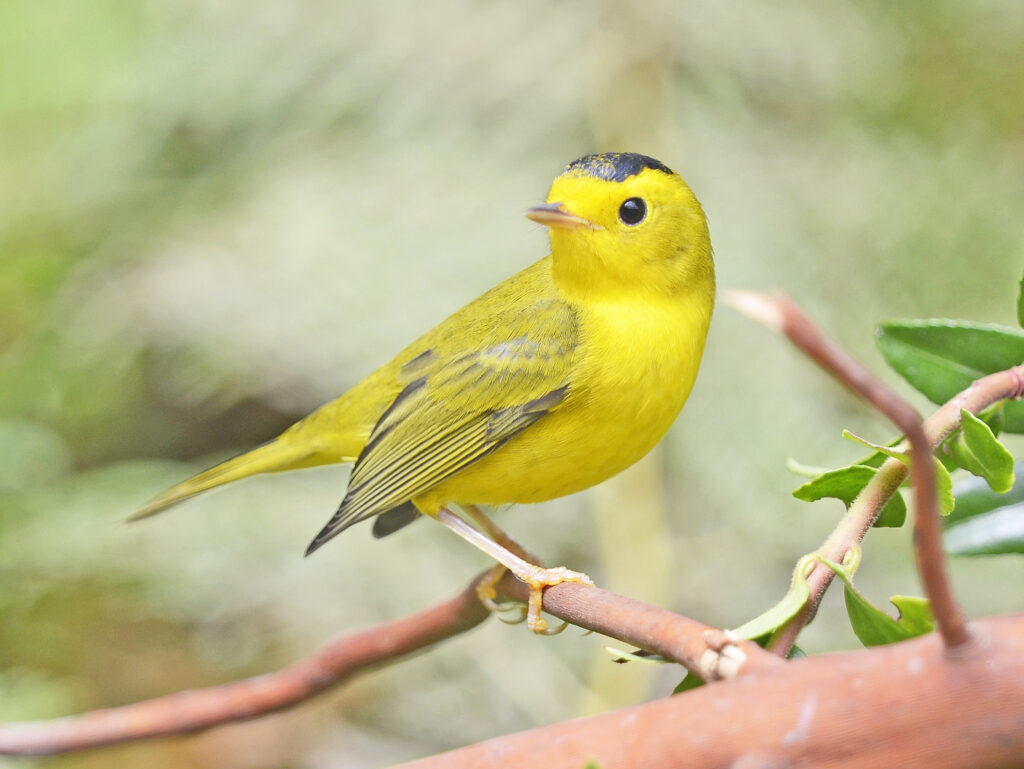
During the spring and autumn migratory seasons, Wilson’s Warblers may often be seen in Ontario.
Female Wilson’s Warblers have a smaller black hat than males do, although both sexes of this little spherical yellow warbler have a huge black crown.
Wilson’s Warblers may be spotted in all 50 states during the spring and fall migrations, although they only breed across Canada, Alaska, and the Pacific Northwest.
Their wintering grounds are in Central America and Mexico.
Wilson’s Warblers forage for insects, insect larvae, and spiders within thickets and along streams near forest borders.
Wilson’s Warblers build their concealed nests from leaves and sedges on the ground close to trees or bushes. Soft grass and animal fur line a cup-shaped basket of grass, bark, moss, and plant material.
The average clutch size is five eggs, and the whole process from egg to fledging takes around eleven days.
2. Yellow-rumped Warbler

Although Yellow-rumped Warblers can be seen in Ontario throughout the year, the months of April to September, and especially October, see the greatest increases in population size.
In the summer, they are found on only 16% of checklists, but during migration, they can be found on up to 32% of checklists.
The wings of a Yellow-rumped Warbler are white, and the bird’s body is gray with yellow highlights on the rump, sides, and face.
Females can be a shade darker, and winter birds have bright yellow sides and rumps before turning back to their typical bright gray and yellow coloring come spring.
The Yellow-rumped Warbler is primarily a Canadian and Rocky Mountain and Appalachian mountain species.
During migration, they will be spotted in the Midwest, and in the winter, they can be found in the southwestern and southern United States, along Mexico, the Pacific Coast, and Central America.
Coniferous forests are a good place to look for Yellow-rumped Warblers, especially during the breeding season.
You can spot them in the winter months in grassy areas with fruiting bushes.
During the summer and while migrating, they subsist primarily on insects, while in the winter they switch to eating fruit like wax myrtle and bayberry.
Female Yellow-rumped Warblers build their nests in conifer trees out of grass, twigs, and pine needles and line them with hair, soft grass, and moss.
They can lay up to six eggs at a time, which take about two weeks to hatch and another two weeks to leave the nest.
In the winter, thousands of Yellow-rumped Warblers will congregate, and they may become hostile toward other birds if they are disturbed.
3. American Goldfinch
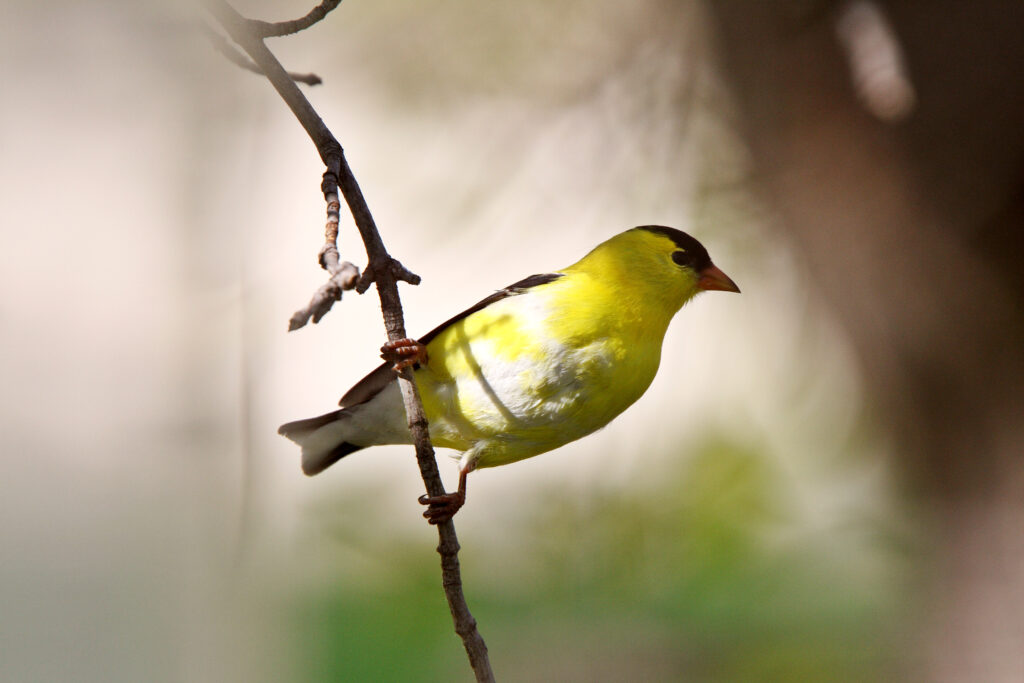
While American Goldfinches may be seen year-round in southern Ontario, their population surges in the spring and summer.
As provided by birdwatchers around the province, they may be found on 46% of summer and 27% of winter checklists.
It’s not hard to find a group of American Goldfinches everywhere you go. Bright yellow and black markings appear on the males in the spring.
Winter males and females are both a darker brown color.
In much of North America, American Goldfinches are permanent residents.
Those that breed across the Midwest and Canada, however, go south to warmer climates during the winter.
Foraging on thistles, sunflowers, and asters, American Goldfinches are often spotted in overgrown fields.
It’s not uncommon to see them in parks, suburban areas, and gardens.
The nests of American goldfinches are typically found in bushes or young trees.
Females will construct these nests out of bark strips, grass, and feathers before laying anywhere from four to six eggs on them.
During the ten to twelve days, it takes for the eggs to hatch, the male is responsible for feeding the female while she incubates them.
It is common knowledge that Brown-headed Cowbirds will lay their eggs in a nest occupied by American Goldfinches, but the young will not survive the parents’ insistence on a diet of seeds.
4. Female Scarlet Tanager

During the months of April through November, Scarlet Tanagers may be seen in the southern part of Ontario. Only 6% of summer to-do lists show up.
Females Scarlet tanagers, and especially males that have recently completed molting, are primarily yellow with darker wings and tails.
Scarlet tanager males have crimson bodies and black necks, heads, and tails.
Their tails are relatively short, and their bills are fairly thick.
The Scarlet Tanager spends the summer breeding in eastern forests before migrating to western South America.
While migrating, they are most visible in the southeastern United States.
Scarlet Tanagers are difficult to spot because they forage in the treetops, but you might catch a glimpse of their brilliant red plumage as they scurry along the branches.
Female Scarlet Tanagers can construct a nest out of twigs, grass, and plant material in just about four days. Soft materials such as grass and pine needles line the interior.
They have a two-week incubation period, during which time they hatch around four eggs.
5. Yellow Warbler

During the spring and summer breeding seasons, the Yellow Warbler is the second most common yellow bird to be seen in Ontario.
They are most commonly seen between April to September, though some hang around into December.
Thirty percent of summer checklists have them included.
Male Yellow Warblers have chestnut streaks on their chest, and females are a duller yellow overall.
Males have superior intelligence to females and younger babies.
The Yellow Warbler is a bird that travels great distances to breed in Canada and the United States (except the southeastern states) and then returns to South and Central America for the winter.
They only appear in the southeastern United States during migration.
Yellow Warblers can be seen foraging for insects like bugs, midges, caterpillars, beetles, and wasps in thickets and on the edges of fields near wetlands and waterways.
Nests of the Yellow Warbler are cup-shaped structures built in the branches of small trees or shrubs and secured with spider webs.
The inside is then stuffed with a softer material like feathers, plant down, or hair.
They can lay up to seven eggs, which take about a month to develop and another week or so before the chicks are ready to leave the nest.
When Yellow Warblers discover that cowbirds have laid eggs in their nest, they will often rebuild their nest on top of the old one and begin the process all over again, sometimes up to six times!
6. Pine Warbler

From about April until about the middle of October, pine warblers can be regularly spotted across southern Ontario. Currently, they are included in 6% of all checklists.
Pine warblers are tiny, plump yellow birds having olive backs, white underbellies, and gray wing bars.
Females may have more white on their bellies and a browner overall appearance.
It’s common for Pine Warblers to breed in the northeastern United States before migrating to the southeast.
In the southern United States, some people stay all year.
As their name suggests, Pine Warblers are most often found in pine woods, and as their range expands, they go higher into the tree canopies.
In warmer months, they consume things like fruit and seeds, whereas, in cooler months, they eat things like caterpillars, beetles, spiders, and other insect and larval foods.
Pine warblers, unsurprisingly, build their nests in pine trees.
They are wrapped with spider silk and lined using plumage and animal hair and constructed from pine needles, bark, twigs, and grass.
Females can lay up to five eggs, which take approximately two weeks to hatch and then another week and a half before the young are ready to leave the nest.
7. Cedar Waxwing

During the months of May through November, Cedar Waxwings can be seen in Ontario, though some individuals remain throughout the year.
In the summer, they appear on 17% of lists, while in the winter, they only make up 2%.
Elegant in appearance, Cedar Waxwings are social birds with a pale brown chest, crown, and wings that gradually transition to gray wings, back, and tail.
Their underside is a very light shade of yellow, and their tips are a vivid shade of the same color.
They have bright red wingtips and a thin black mask over their eyes.
After successfully breeding in Canada, Cedar Waxwings migrated south to spend the winter in Mexico, Central America, and the United States.
The northern states of the United States are their permanent home.
Cedar Waxwings frequent berry bushes, grassland, woods, riverbanks, and cities.
During the warmer months, they supplement their diet with insects in addition to their usual fruit fare.
Cedar Waxwings construct their nests in trees out of grass, twigs, hair, and plant material and line them with pine needles and soft grass.
They can lay up to six eggs at a time, which take about twelve days to hatch and another sixteen or so days for the young to leave the nest.
Cedar Waxwings pass around gifts when they’re trying to woo a potential mate.
8. Palm Warbler

Spring and autumn are the best times to see a Palm Warbler in Ontario.
The palm warbler is primarily brownish-olive in color with a rusty, reddish band on its head.
Although they are native to Canada, you can spot them in the eastern U.S. during migration and year-round long in the far south and Florida.
Though primarily a Canadian breeder, Palm Warblers can be spotted in the eastern United States during the winter months.
Some spend the winter across Florida and other southeastern states.
Spring and autumn are the best times to see Palm Warblers, and they can be found in scrubby areas, weedy fields, and forest edges.
They frequently join other birds, like yellow-rumped warblers, sparrows, and juncos in foraging for insects along the ground.
The ground-dwelling nests of Palm Warblers are constructed from sedge, grass, and ferns, woven into a cup shape, and lined with soft grass, animal hair, and feathers in bogs and boreal forests.
On average, a female will produce five eggs.
9. Common Yellowthroat

Twenty-three percent of summer checklists have a Common Yellowthroat species, which spends its breeding season in Ontario. Observations of them are most common between May and October.
Small songbirds, Common Yellowthroats, have long, brownish heads and bright yellow underparts.
The men’s faces are covered with black masks. Underneath, their shade of yellow can be more olive or less vibrant, depending on where you look.
The breeding season for the Common Yellowthroat spans the entire continent of North America during the summer months, with the exception of the far north of Canada and Alaska.
Some, particularly in the Gulf Coast and Pacific Southwest, stay put all year. Then, they head south for the colder months.
The thick, tangled vegetation that is home to Common Yellowthroats is typical of their habitats in marshy or wetland areas and brushy fields.
The female Common Yellowthroat constructs a nest on the ground or very close to it in a marshy area, using reeds for structural support.
The grass and sedges that comprise the nest are elevated on a bed of grass and leaves.
They can hatch up to six eggs, and it usually takes about a month for the eggs to hatch and the chicks to fledge.
Common Yellowthroats recognize a male bird by its distinctive black mask and will attack if it is replaced with a fake or if the mask is removed.
10. Eastern Meadowlark
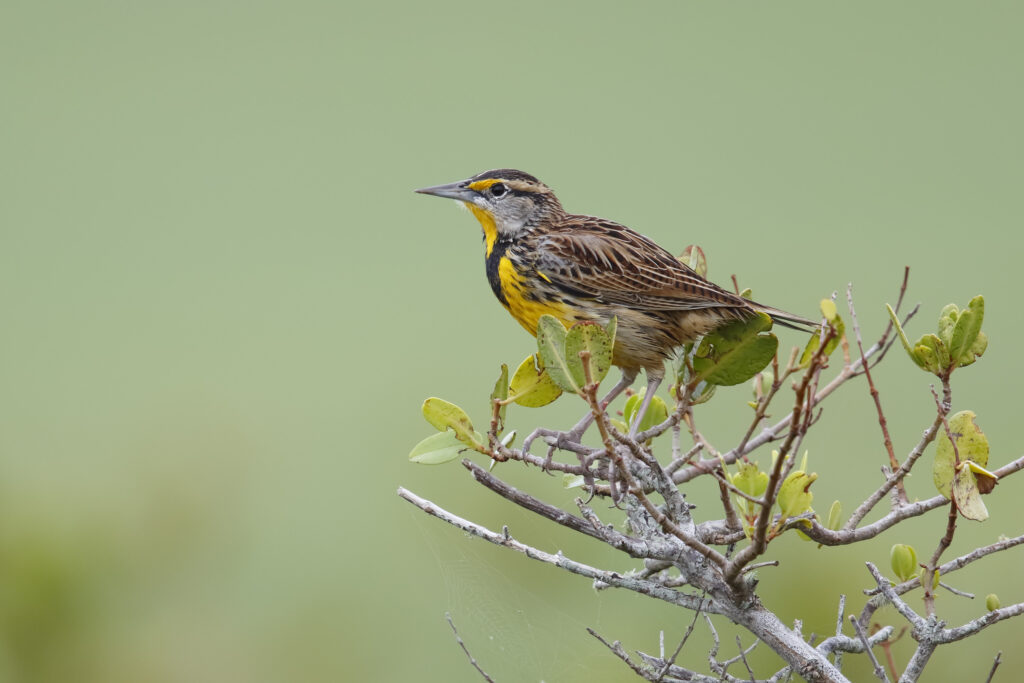
Even though the Eastern Meadowlark is in danger of extinction throughout Ontario, you may still see it if you go to the southern part of the province between March and October.
The Eastern Meadowlark is a medium-sized songbird that is a brilliant yellow underside and light brown with black markings on the back.
The black ring across their breast is very recognizable.
The Eastern Meadowlark is an all-year resident of the eastern United States.
It breeds in Canada and the northern United States and then migrates south.
The singing and displaying of the Eastern Meadowlark heralds the arrival of spring in the Eastern United States, but sadly, this species is currently considered to be near-threatened.
Eastern Meadowlarks are common in meadows and prairies, where they forage for insects on the ground.
In the winter, they flock together to forage for seeds in the fields.
Eastern Meadowlark nests are underground and may be rather impressive, with features like tunnels and ceilings constructed of braided grasses.
11. Baltimore Oriole

From May until about midway through September, 24% of checklists feature the Baltimore Oriole in southern Ontario.
Throughout eastern North America, the arrival of spring is heralded by the brilliant yellow of Baltimore Orioles.
A male adult can be identified by his distinctive orange and black plumage and the white wing bars that run the length of his black wings.
Females have brownish-yellow wings and backs and a grayish-yellow underside and head.
These birds, which belong to the blackbird family, are roughly the size of a Robin but much smaller.
The breeding range of the Baltimore Orioles extends from the southern and central United States to the southern and central Canadian provinces and the southern United States border.
The Baltimore Oriole leaves its summer home as early as July to spend the winter in warmer climes like Central America, Florida, and the Caribbean.
The Baltimore Oriole is a common backyard visitor and can also be seen foraging in parks and open woodland areas, along riverbanks, and at the edges of forests.
Beetles, grasshoppers, crickets, snails, and spiders are among the insects that make up their diet.
Plants like bananas, mulberries, raspberries, cherries, and oranges can be damaged, but they also help eat pest species.
One of spring’s pleasures is hearing Baltimore Orioles, whose songs sound like flutes.
In addition to loud, shrill alarm calls, they chatter constantly.
12. Magnolia Warbler

The Magnolia Warbler is one of the most frequently seen summer birds in Ontario, showing up on 8% of summer lists.
The male Magnolia Warbler has a black back and a yellow belly.
They are distinguished by the “necklace” of black streaks running from their necks to their stomachs.
In contrast to males, females are uniformly grayer all over, and they lack the signature streaking along the middle.
It’s common to see Magnolia Warblers in the northern United States and Canada.
They pass across the eastern United States on their annual migration.
They migrate from Central to South America and the Caribbean during the winter.
During migration, you’re more likely to see Magnolia Warblers since they congregate on low branches in woods and parks.
They eat spiders and bugs for sustenance.
Magnolia warbler nests are flimsy affairs, made of weeds and grass, and are constructed near the trunk of evergreen trees.
On average, they produce a brood of four eggs, which take roughly 12 days to hatch and another 9 days to fledge.
13. American Redstart

One-sixteenth of these checklists feature American Redstarts, which spend the summer across Ontario.
They begin to arrive in April and depart in October.
The male American Redstart is mostly black, with brilliant orange spots and a white abdomen.
Males are typically black, while females are olive-gray with many yellow spots.
The breeding range for American Redstarts extends from the eastern United States and Canada to the western United States.
Also, through migration, they could appear in the western and middle states of the United States.
Birds of this species, known as American Redstarts, may be found in both thickets and yards, where they feed on berries like magnolia and serviceberry, and in deciduous forests, where they consume insects.
The American Redstart builds its nest of grass, bark, and other plant material near the trunk of a tree or a big shrub.
They may produce as many as five eggs at a once, which took nearly 2 weeks to hatch and another week or so to fledge.
14. Black-throated Green Warbler

In southern Ontario, the best time to see a Black-throated Green Warbler is from May through October.
The percentage of summer checklists where they appear is 10%.
Small yellow songbirds, Black-throated Green Warblers have an olive-yellow back and a black neck.
They are white on the underside and have black striping on the sides and wings. The black markings on the necks of males are much larger than those of females and young.
The best time to see a Black-throated Green Warbler is during its epic spring and fall trek through the eastern United States and into Canada.
In the winter, they migrate to warmer climates across Mexico, northern South America, and the Caribbean.
The Black-throated Green Warbler is a little yellow bird that may be easily distinguished from other small birds because of its black neck, which allows it to better target insects in the canopy of woods.
Black-throated Green Warblers have nests in tiny trees near the vehicle. Spider webs hold the twigs and bark together, while moss, animal hair, and plumage provide a cozy lining for the nest.
About four eggs are laid, and it takes about a month and a half for the chicks to hatch and another week and a half for them to fledge.
When a male Black-throated Green Warbler has driven away competitors, he will sing approximately 400 times in an hour and execute a ‘gloating’ flight.
15. Nashville Warbler

Breeding Nashville Warblers may be seen across Ontario from April through October, with some individuals remaining into January.
Only 11% of summer bucket lists don’t include them.
The undersides of Nashville Warblers are mainly yellow, although they have white on their lower bellies.
They’re greenish yellow on the back, and their heads are gray with white eyerings.
Males tend to be more intelligent than females and young.
The majority of Nashville Warblers may be found in the northeastern United States and Canada, with a lesser number in British Columbia and the northwest United States.
Most states in the United States also provide excellent opportunities to watch them while they are migrating.
Most of them migrate to Mexico during the winter.
The Nashville Warbler is an insectivorous songbird that frequents scrubby areas and low deciduous woods.
Nashville Warblers build their nests in low bushes. Bark, moss, and grass are weaved into a cup shape and lined with softer stuff to create the nest.
They have a relatively short incubation period (about ten days for the eggs to hatch and 10 days for the youngsters to fledge).
Conclusion
In this article, we cover the yellow birds that are native to Ontario.
I really hope that this article will assist you in recognizing the many yellow birds that can be seen in Ontario.
Therefore, the next time you go outside, be sure to have your camera with you so that you may snap pictures of some lovely yellow birds.
FAQ
Where did the yellow bird come from in Ontario?
About 18 centimeters in length, including its long tail, the Yellow-breasted chat is a sizable songbird. It has an olive-green back, a yellow breast, and neck, white eye rings, a white stomach, and a white rump.
Is the goldfinch the only similar bird?
About twice as big as a goldfinch, the Evening Grosbeak has a massive bill and enormous white wing patches instead of the wing bars found on American Goldfinches.
Last Updated on March 22, 2023 by Lily Aldrin
